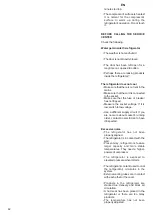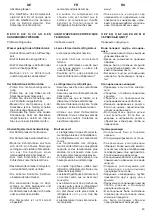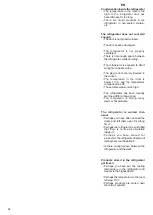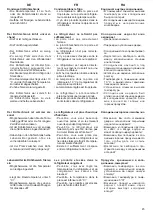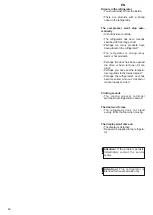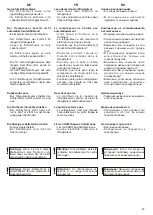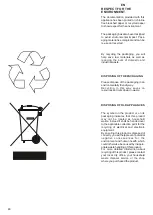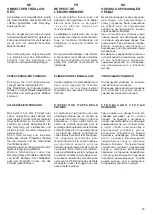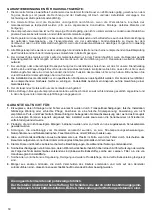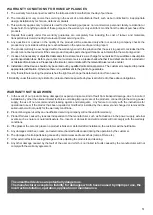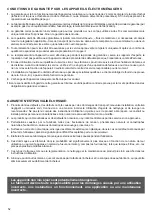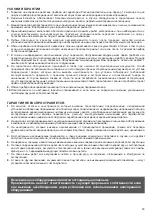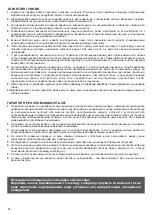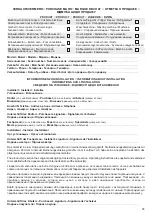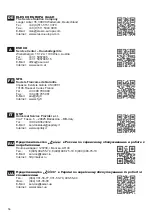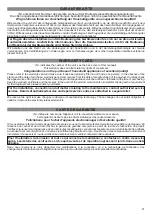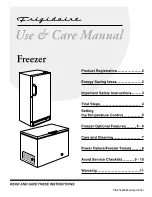
42
EN
minutes to drop.
BEFORE CALLING THE SERVICE
CENTER
•
The compressor's surface is heated:
It is normal for the compressor's
surface to warm up during the
refrigerator's operation. Do not touch
it.
Check the following:
•
Present-day refrigerators feature
larger capacity and more stable
temperatures. They need a higher-
powered compressor.
Excessive noise
•
The refrigerator is exposed to
elevated pressure when it starts.
Water gets inside the refrigerator
•
Make sure that the cord is connected
to the socket.
•
A hot meal has been placed in the
refrigerator or there are too many
products.
•
The temperature has not been
properly adjusted.
•
Perhaps there are leaking products
inside the refrigerator?
•
Products in the refrigerator are
stacked too densely and block air
circulation.
•
Use a different supply circuit. If you
are not sure about socket's running
order, contact an electrician to have
it inspected.
•
The refrigerator has not been
properly aligned.
•
External cooling tubes are in contact
with each other or the cover.
•
Measure the socket voltage. If it is
low, switch to low voltage.
•
Make sure that the fuse or breaker
has not tripped.
•
The door is not properly closed.
•
The weather is hot and humid.
•
The door has been left open for a
long time or is opened too often.
•
Make sure that there is current in the
mains.
The refrigerator does not cool
•
The refrigerator is in contact with the
wall.
•
The refrigerant coolant (used to cool
the refrigerator) circulates in the
system.















